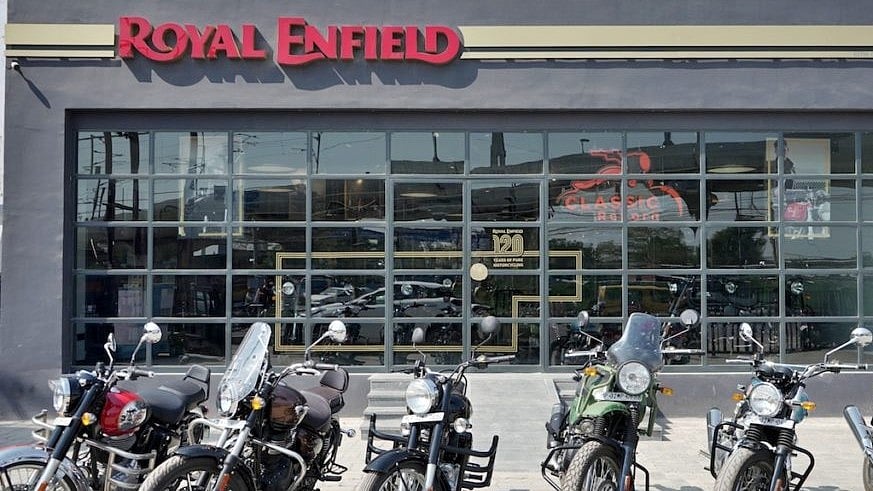Anil Ambani, who was earlier the chairman of the Reliance group, had ambitions of turning Reliance Capital into a world-class bank, cut to today, when Reliance Capital is going through an insolvency process as banking regulator Reserve Bank of India sent the company to the bankruptcy courts last year.
But how did Reliance Capital end up in such a poor state?
Risky Bets
The story began back in 2005, when the Ambani brothers decided to split the family business and Anil Ambani took over the telecom business and financial services. Anil Ambani was betting on what he believed could be the 'future' of India. But having a belief is not enough when you run a business.
He went on to take bigger, bolder, and riskier bets in the entertainment, power, and infrastructure sectors. These risky decisions may have pushed the company into more and more debt.
Debts and internal lending
In a bid to grow at all costs, the companies in the Reliance Group took on a huge amount of debt. In 2017, finally, one of the entity i.e. Reliance Communications, fell. This was the beginning of the fall of Anil Ambani's business empire. Just like a pack of dominoes, his empires kept tumbling until the final piece, which was Reliance Capital.
Reliance Capital was a financial services company that was involved in multiple divisions, like asset management, commercial finance, life insurance, wealth management, and home finance.
Initially, the plan of having such a diverse set did seem to hold a lot of potential. But soon problems started to surface. Let's take the example of Reliance Home Finance. It was expected that as a home finance company, it would lend money to regular people who want to buy a new house. But that was not entirely the case, as only 50 per cent of its lending was for regular folks, and the other 50 percent was to other companies in real estate development and infrastructure. But these sectors have always had cash flow issues, especially when the economic cycle turns.

Things get worse for Reliance Home Finance as they also start lending money to the struggling companies in their own group. Which means when these companies go bust, Reliance Home Finance will also go down with them.
Now imagine what the mess would have been in the Commercial Finance subsidiary, whose job was to lend to corporates. They were in a similar mess as they were lending more money to Reliance Group companies.
Ultimately, when Reliance Communications and Reliance Power started to default on their loans, the problems started to escalate, as Reliance Capital couldn't even pay its own creditors.

The downfall begins
In March 2019, Reliance Capital only had Rs 11 crore in cash, and by June, the company's auditor, PwC, resigned due to dissatisfaction with the way Reliance Capital had reacted to the financial issues flagged. By September of that year, Care Ratings had pushed Reliance Capital's debt to default status.
To make things worse, no one wanted to lend money to non-banking financial companies like Reliance Capital. This was due to the NBFC crisis during that time because of the Infrastructure lender IL&FS case.
Eventually the funds started to dry up and the company started to sell its stakes in companies that were actually doing well like the mutual fund company. Ultimately Reliance capital started to lose its assets. Today the company has $9 billion in assets to meet its $2.9 billion in liability.
The RBI finally decided to take the matter into its own hands as there were corporate governance issues. RBI suspended the board of a financier controlled by Anil Ambani and appointed an administrator; it also sent the firm to the bankruptcy tribunal.
Shareholder to be in trouble
Anil Ambani had started to cut his stake in the company, and by March 2020, he only had a 2 per cent stake. But the retail investors were taking on more and more of the stocks, and in the end they owned a total of 57 per cent of the company. This was because they wanted to make quick money whenever there was some good news from the company. Now the problem is that after the bankruptcy proceedings there may not be much left for the shareholders. This has initially happened when another NBFC DHFL went under bankruptcy.
Current situation
Reliance Capital is currently going through the insolvency process, and the deadline for submitting bids is November 28, 2022. But Oaktree and Torren have requested to extend the deadline further to December 16, while Piramal and Zurich want the date extended to December 23. The extended timeline is so that the companies can finalise the resolution plan.
In August end, six non-binding bids were received for Retail Capital as a company, which ranged between Rs 4,000 crore and Rs 4,500 crore. While, Reliance General Insurance busness has received bids between Rs 3,500 crore and Rs 7,000 crore.
The deadline to complete the resolution process of Relaince Capital has been set to January 31, 2023.












